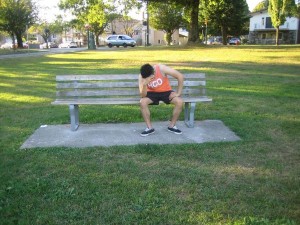Hip flexors are a group of muscles that are located in the front area of the hips which helps in the forward motion when running or walking. When kicking or sprinting, it gives large amounts of stress on the hip flexor and cause a hip flexor strain.
[youtube url=”https://www.youtube.com/watch?v=dUhkpIceTnM”]A hip flexor strain is due to the overstretched or torn tendons or muscles and there is be inflammation and pain that requires proper treatment to prevent the injury from worsening.
There are a number of muscles that function for hip adduction and flexion. When it comes to flexion, it helps in lifting the leg such as stepping into a box while adduction helps in bringing the leg close to the middle line of the body. Take note that both help in lifting the leg up and in. When one or several of these muscles becomes strained due to fatigue, overuse, trauma or imbalance, symptoms such as swelling, tenderness, bruising, pain, loss of strength and snapping sound when the hip is moved can heard when the injury occurred. If the injury is only a minor strain on the muscle, a hip flexor wrap can be used to provide the needed support while at the same time allowing the muscles enough time to heal.
Symptoms
- Inability in lifting the legs or knees and severe pain when trying to lift the legs.
- Pain when walking or running.
- There is tenderness, redness and swelling of the affected area.
- The hip flexor muscle can end up bruised if they are damaged.
- Sometimes, the flexor muscles will convulse or twitch after an injury or strain.
Treatment

- Place an ice pack on the affected area at least for 30 minutes at a time every three to four hours. Continue this treatment for 2-3 days until pain is reduced.
- Take a prescribed anti-inflammatory medication to lessen the inflammation.
- Take plenty of rest especially the hip flexor muscle as well as avoid performing activities that can cause straining on the hip flexor muscle. It is also recommended to avoid sports and perform exercises until totally free from pain. Avoid returning quickly to normal activities in order to prevent the condition from getting worse.
- Gradually stretch the hip flexor muscles in order to improve the strength and flexibility of the hip. The individual should kneel where the uninjured leg must be positioned forward with foot level on the floor. Steadily lean forward at the hip and make the back slightly arch until a stretch can be felt in front of the hip. Remain in this position for at least 30 seconds and repeat this procedure at least three times every day.
- Stretch the quadriceps or thigh muscles. Stand with both the hands on the wall or counter for support and then take hold of the top area of the foot and ankle of the injured leg. Pull the foot up until the buttock until a stretch can be felt on the front of the thigh. Stay in this positions at least for 30 seconds and repeat at least three times every day.
